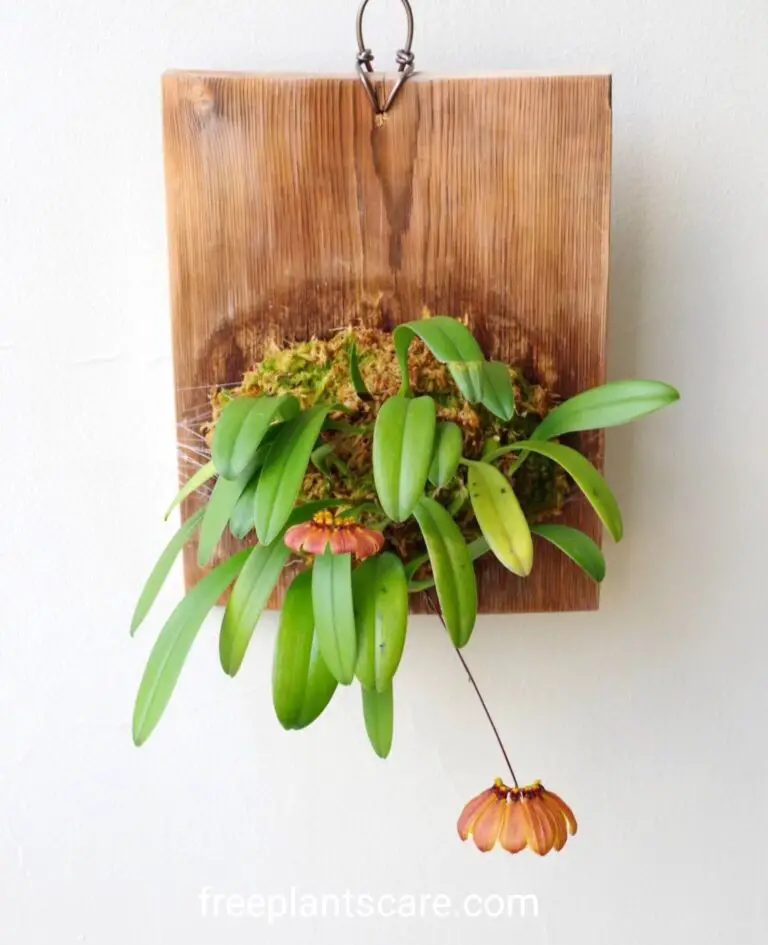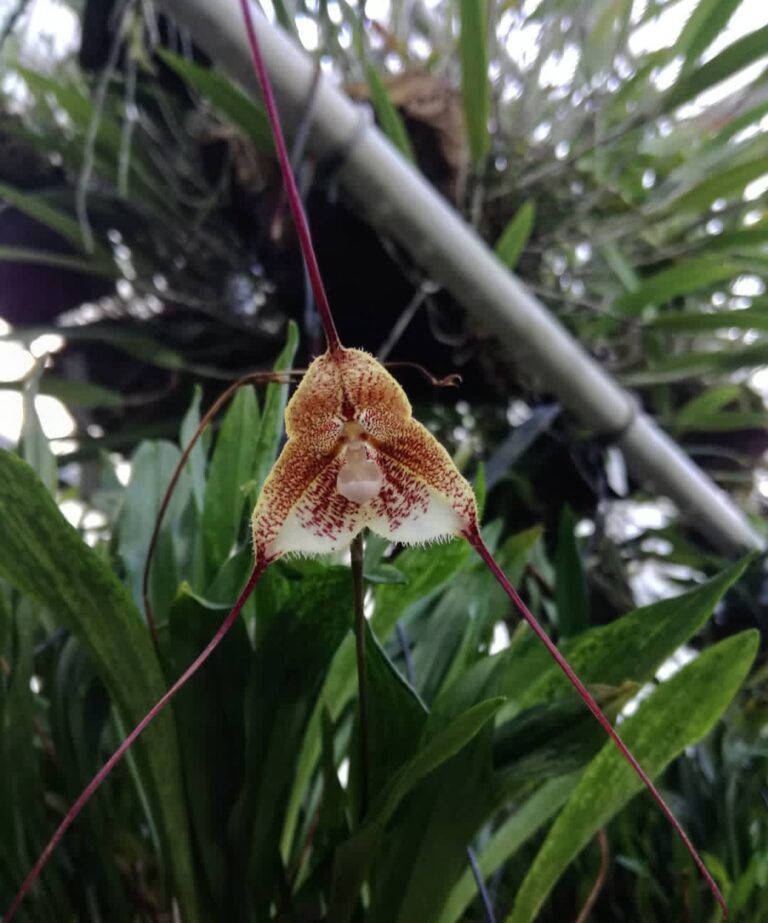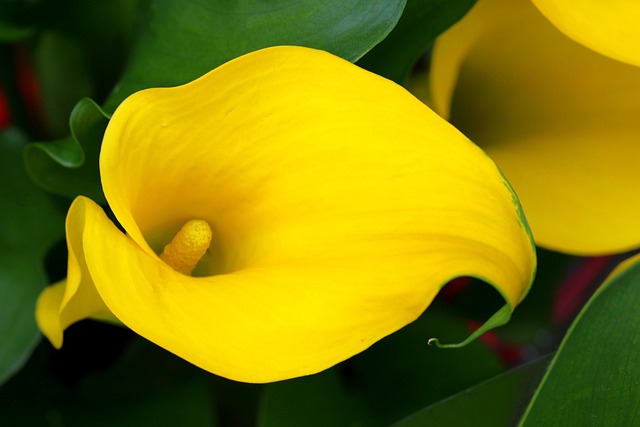Oncidium orchids, with their stunning and intricate flowers, are beloved by many orchid enthusiasts for their beauty and unique charm. However, like all plants, Oncidiums can sometimes face problems that threaten their health. One of the most common issues that orchid owners encounter is rotting pseudobulbs. Pseudobulbs play a crucial role in the orchid’s survivel
- 1 Oncidium Orchid Pseudobulb Rot
- 2 Why Do Oncidium Pseudobulbs Rot?
- 3 which are the primary culprits in causing rot.
- 4 Signs of Rot in Oncidium Pseudobulbs
- 5 Steps to Treat and Prevent Rot
- 6 1. Isolate the Affected Plant
- 7 2. Inspect and Remove the Rot
- 8 3. Treat the Plant
- 9 4. Repot in Fresh Media
- 10 5. Adjust Watering Practices
- 11 6. Improve Air Circulation
- 12 Preventing Future Rot
- 13 Monitor Humidity Levels
- 14 Inspect Your Plant Regularly
- 15 Provide Adequate Space
- 16 When to Call It Quits?
- 17 FAQS
Oncidium Orchid Pseudobulb Rot

they store water and nutrients for the plant, especially during periods of dormancy or low light. When these vital structures begin to rot, the health of the entire plant is at risk. If you’ve noticed soft, discoloured pseudobulbs or suspect rot, don’t panic. In this guide, we’ll take you through the causes, symptoms, and steps to treat and prevent pseudobulb rot in Oncidiums, ensuring that your plant gets back to health as soon as possible.
Why Do Oncidium Pseudobulbs Rot?
The rotting of pseudobulbs in Oncidium orchids is often caused by a combination of factors. Understanding these causes will help you take the necessary steps to prevent the problem from recurring. One of the main culprits of pseudobulb rot is overwatering. Oncidium orchids, like many other epiphytes, are adapted to a growing environment where they experience wet periods followed by drying out.
Overwatering can occur when the plant is kept too moist for too long, causing the pseudobulbs and roots to become waterlogged and susceptible to decay. Along with overwatering, poor drainage is another significant factor. If your orchid is in a pot that doesn’t allow water to drain away quickly enough, the moisture can build up and create an environment conducive to rot.
Fungal and bacterial infections are often the result of excess moisture and poor air circulation, with pathogens like Phytophthora and Pythium invading weakened or damaged pseudobulbs. Lastly, mechanical damage to the pseudobulbs, whether from handling or from pests, can introduce infections or cause the tissue to become vulnerable to rot.
Pseudobulb rot in Oncidium orchids is typically caused by excess moisture, particularly when the plant’s roots cannot dry out properly. This leads to a build-up of water in the rhizome and pseudobulb, creating a favorable environment for fungal or bacterial infections,
which are the primary culprits in causing rot.
The rot is not directly linked to humidity alone but results from a combination of factors:
High humidity combined with poor air circulation or overwatering.
Excess moisture around the roots or pseudobulbs, especially in poorly draining soil or pots.
Overwatering, which keeps the pseudobulbs too wet for prolonged periods.
Fungal pathogens, such as those from the genus Fusarium, are often responsible for pseudobulb rot, although bacteria can also play a role. To prevent and treat rot, it’s important to ensure good drainage, airflow, and avoid letting the plant sit in water.
Signs of Rot in Oncidium Pseudobulbs
The earlier you spot rot, the better your chances of saving your Oncidium orchid. Early detection is key, as rot can spread quickly and impact the entire plant. The first signs of rotting pseudobulbs are often subtle but noticeable if you pay close attention. Look for soft, mushy spots on the base of the pseudobulb, which might start to appear discoloured.
typically turning brown, black, or yellow. In some cases, you might also notice a foul or musty odour, which is a clear indication of rotting tissue. As the rot progresses, the leaves above the affected pseudobulb may start to wilt or yellow, and you might even see visible mould or fungal growth around the affected area. These symptoms are a sign that the rot has begun to spread, and prompt intervention is necessary to prevent further damage.
Steps to Treat and Prevent Rot
Timetable for Treating Oncidium Orchid Pseudobulb Rot
| Step | Action | Timeline |
|---|---|---|
| 1. Remove Affected Areas | Carefully remove rotting tissue using sterilized tools. Discard affected sections to prevent infection spread. | Immediately |
| 2. Increase Warmth | Place the orchid in a warm area (70-80°F / 21-27°C) with good air circulation. | For the first 1-2 weeks |
| 3. Reduce Humidity | Lower humidity to around 50-60%, ensuring good airflow, but avoid overly dry conditions. | For the first 1-2 weeks |
| 4. Apply Fungicide/Sulfur | Apply a sulfur-based fungicide or orchid fungicide as per the manufacturer’s instructions. | Once every 7-10 days for 2-3 weeks |
| 5. Improve Drainage | Check the pot for proper drainage; repot if necessary with a well-draining orchid mix. | As soon as possible, ideally within 1-2 days |
| 6. Adjust Watering Routine | Water only when the top inch of the soil is dry. Avoid letting the plant sit in water. | Ongoing, adjust every watering session |
| 7. Monitor and Maintain | Regularly check for new rot or signs of infection. Repeat treatments or adjust environmental conditions as needed. | Daily for the first 1-2 weeks, then weekly |
This schedule will help manage pseudobulb rot and maintain the health of your Oncidium orchid
1. Isolate the Affected Plant
As soon as you notice signs of rot in your Oncidium orchid, it’s important to isolate the plant from any other orchids or plants. This is to prevent the spread of pathogens to healthy plants. A rot infection can quickly travel from one orchid to another, so keeping the affected plant separate will help reduce the risk of contamination.
2. Inspect and Remove the Rot
To treat the rot, you’ll need to carefully inspect the plant. Gently remove your Oncidium from its pot and carefully examine the roots and pseudobulbs. Be thorough when checking—sometimes rot can sneak into small crevices or remain hidden. Once you locate the rot, use sterilised scissors or pruning shears to remove all affected tissue. Cut well into the healthy tissue to ensure that no rot remains. Make sure to sterilise your cutting tool between cuts to prevent any potential cross-contamination. Removing all the infected material is crucial to stop the spread of the rot.
3. Treat the Plant
After removing the rot, you’ll need to treat the affected areas. One option is to apply a fungicide to the exposed tissue to help prevent any future fungal or bacterial growth. Alternatively, cinnamon powder, a natural antifungal agent, can also be applied to the cut areas. Both options help create a protective barrier against infection. Once treated, leave the plant in a warm, dry area for a few hours to allow the cuts to callous over and dry out before repotting.
4. Repot in Fresh Media
Once your plant is dry and the cuts are healed, it’s time to repot your Oncidium in fresh, well-draining media. Orchids like Oncidiums thrive in bark-based potting mixes, which allow for proper air circulation around the roots. You can also add perlite or sphagnum moss to help with drainage. Ensure that the pot you use has adequate drainage holes to prevent any water from accumulating at the bottom. Place the Oncidium in the pot so that the healthy pseudobulbs are above the media, and avoid burying the newly cut areas in soil. This will help ensure that the plant remains well-aerated and has enough space to grow.
5. Adjust Watering Practices
During the recovery process, it’s important to adjust your watering habits. Oncidiums are sensitive to overwatering, so you should only water the plant once the potting mix is nearly dry. Water the plant thoroughly when you do, but make sure to allow excess water to drain away. For the first few weeks after repotting, you may want to mist the plant lightly instead of watering heavily, as this will help keep it hydrated without over-saturating the roots and pseudobulbs.
6. Improve Air Circulation
One of the most effective ways to prevent rot in the future is to ensure that your Oncidium is getting proper air circulation. Orchids thrive in environments with good airflow, and without it, moisture can stagnate around the plant, encouraging fungal and bacterial growth. If possible, place the plant in an area with gentle airflow, or consider using a small fan to keep the air moving. Additionally, avoid crowding your plants too closely together, as this can limit air circulation
Preventing Future Rot
Prevention is always the best approach when it comes to orchid care. Once your Oncidium has recovered from rot, here are some tips to ensure the problem doesn’t recur:
Regularly Replace Potting Mix
Potting mix deteriorates over time, breaking down into fine particles that can retain too much water. Replace the potting media every 1 to 2 years to ensure proper drainage and to reduce the buildup of pathogens.
Monitor Humidity Levels
Oncidiums prefer moderate humidity levels, typically between 40% and 60%. Keeping the humidity too high can increase the risk of rot, while low humidity can stress the plant. Use a hygrometer to monitor conditions in your orchid’s environment and adjust accordingly.
Inspect Your Plant Regularly
Check your Oncidium orchid regularly for signs of stress, rot, or pests. The sooner you catch problems, the easier it will be to address them before they spread.
Provide Adequate Space
Avoid overcrowding your orchids. Each plant should have sufficient space to allow air to circulate around it. This will not only help prevent rot but will also allow your plants to grow and bloom more freely.
When to Call It Quits?
In some cases, the rot may have spread too far for the plant to recover. If the rot affects the majority of the pseudobulbs or has reached the crown of the plant, it may not be possible to save it. However, if there is still a healthy portion of the plant left, you can try propagating it by cutting off the healthy pseudobulbs and replanting them. With care, you may be able to revive your orchid or at least save part of it.
Rotting Oncidium pseudobulbs can be a distressing issue for any orchid grower, but with the right approach and timely intervention, your Oncidium can recover and continue to thrive. By addressing the causes of rot and following the proper care steps, you’ll not only save your orchid but also prevent future issues. Remember, regular maintenance and vigilance are key to keeping your orchids healthy and blooming beautifully.
FAQS
What are pseudobulbs in Oncidium orchids?
Pseudobulbs are storage structures in Oncidium orchids that help retain water and nutrients. They are crucial for the plant’s survival during periods of drought.
Why are my Oncidium orchid pseudobulbs rotting?
Pseudobulbs can rot due to overwatering, poor drainage, fungal or bacterial infections, or excessive humidity. These factors create conditions where pathogens thrive, leading to rotting.
How can I identify rotting pseudobulbs in Oncidium orchids?
Signs of rotting include mushy, discolored (brown or black) pseudobulbs, foul odor, and visible fungal growth or decay on the affected areas.
Can rotting pseudobulbs spread to other parts of the Oncidium orchid?
Yes, rot can spread if left untreated, affecting the roots, leaves, and other pseudobulbs, eventually killing the plant.
What should I do if I notice rotting pseudobulbs in my Oncidium orchid?
Carefully remove the rotting pseudobulbs with sterilized tools, treat the cuts with a fungicide or cinnamon powder, and repot the plant in fresh, well-draining orchid medium.
What is the best way to prevent pseudobulb rot in Oncidium orchids?
Ensure proper watering practices, use a well-draining orchid mix, maintain good air circulation, and avoid letting water sit on the pseudobulbs for prolonged periods.
What type of potting mix is best for Oncidium orchids to prevent pseudobulb rot?
Use a mix that promotes good drainage, such as bark, perlite, or sphagnum moss. Avoid dense soils that retain too much moisture.
Can I save an Oncidium orchid with multiple rotting pseudobulbs?
Yes, if the rot is caught early. Remove all affected pseudobulbs, treat the plant with an antifungal solution, and provide proper care to encourage recovery.
What environmental conditions can cause pseudobulb rot in Oncidium orchids?
High humidity, stagnant air, and insufficient light can contribute to pseudobulb rot by creating a favorable environment for pathogens.
Are some Oncidium orchid varieties more prone to pseudobulb rot?
Certain Oncidium varieties with thinner pseudobulbs may be more susceptible to rot due to their lower water storage capacity.
What role does airflow play in preventing pseudobulb rot in Oncidium orchids?
Good airflow helps dry out excess moisture and prevents the growth of fungi and bacteria that cause pseudobulb rot.
Can repotting too frequently lead to pseudobulb rot in Oncidium orchids?
Frequent repotting can stress the plant and damage roots, making it more vulnerable to infections that cause pseudobulb rot.
How can I distinguish between healthy and rotting pseudobulbs in Oncidium orchids?
Healthy pseudobulbs are firm, plump, and green, while rotting ones are mushy, discolored, and may have a foul smell.
What products can I use to treat Oncidium orchid rotting pseudobulbs?
Use fungicides specifically designed for orchids, or natural remedies like cinnamon powder or hydrogen peroxide diluted with water.






